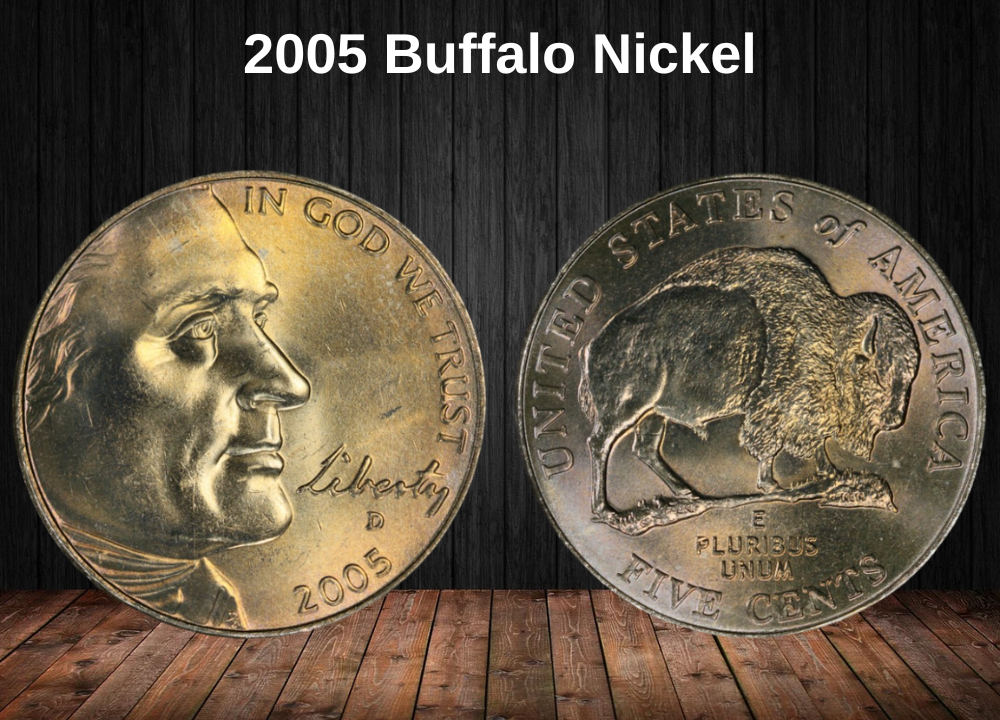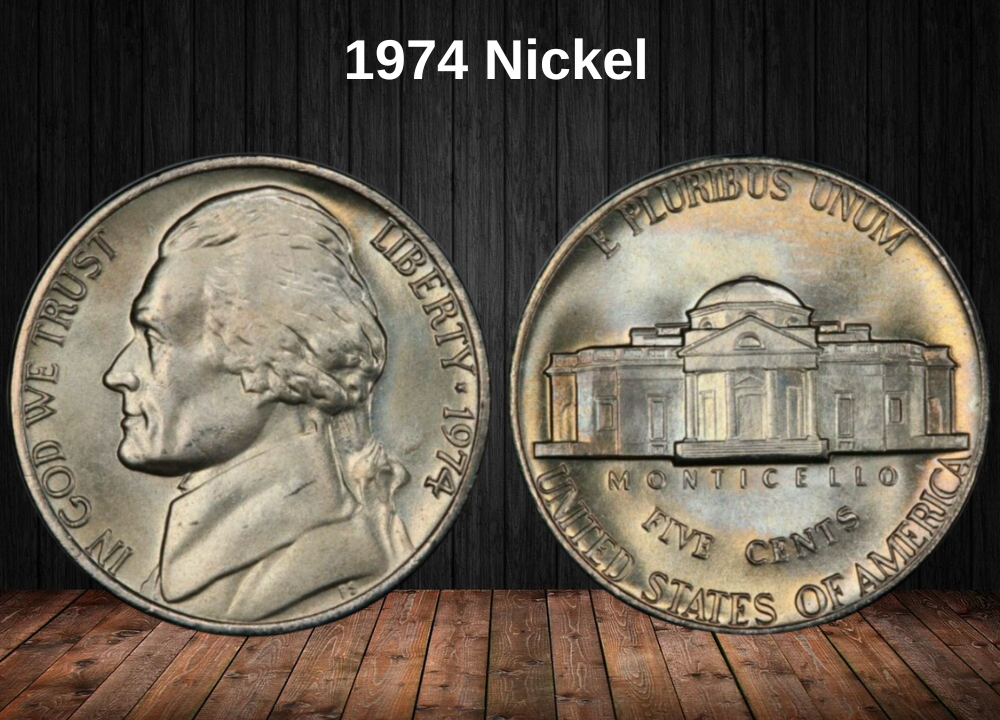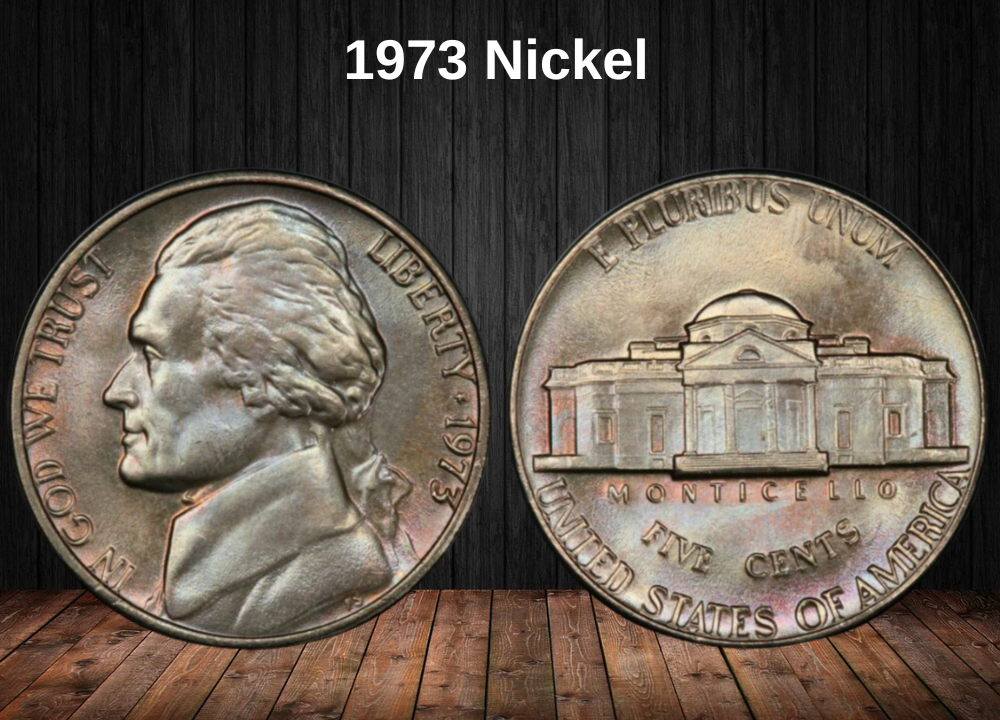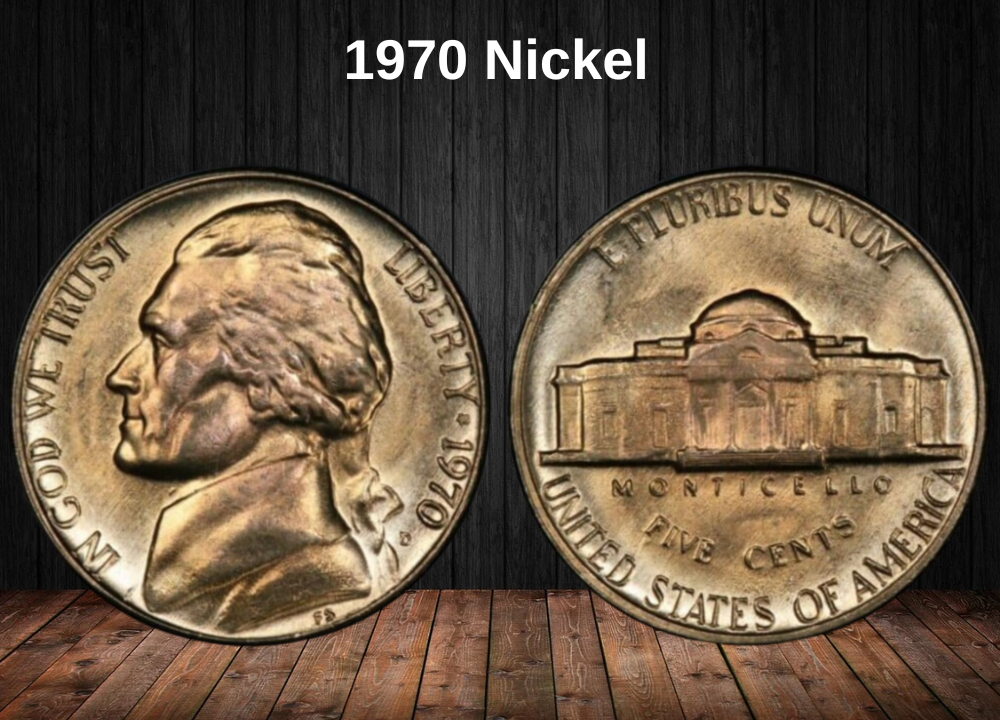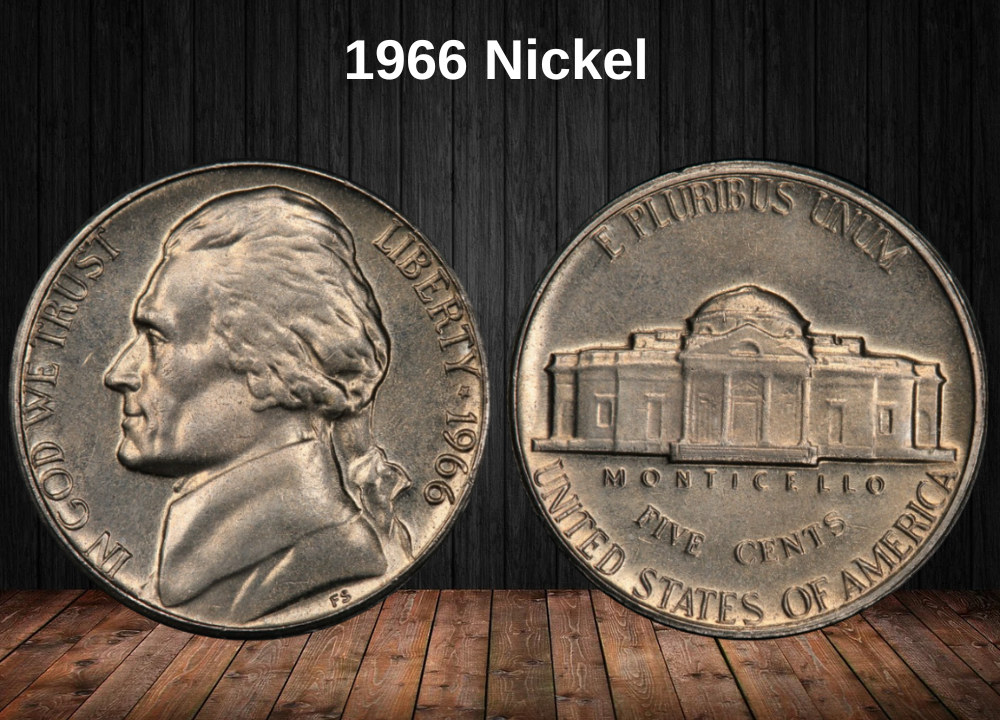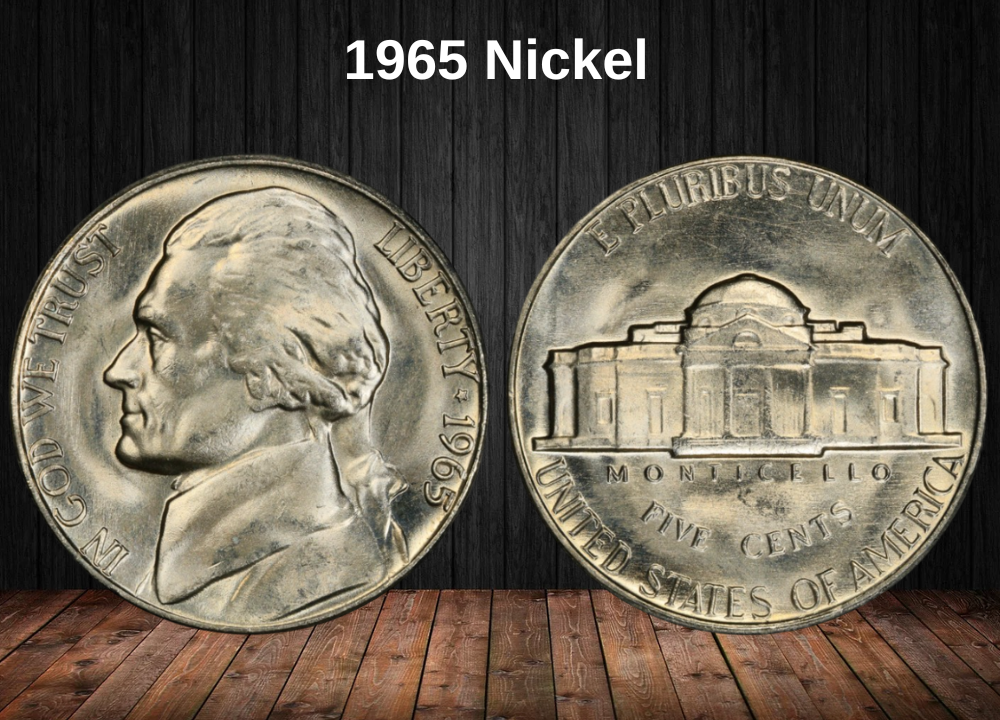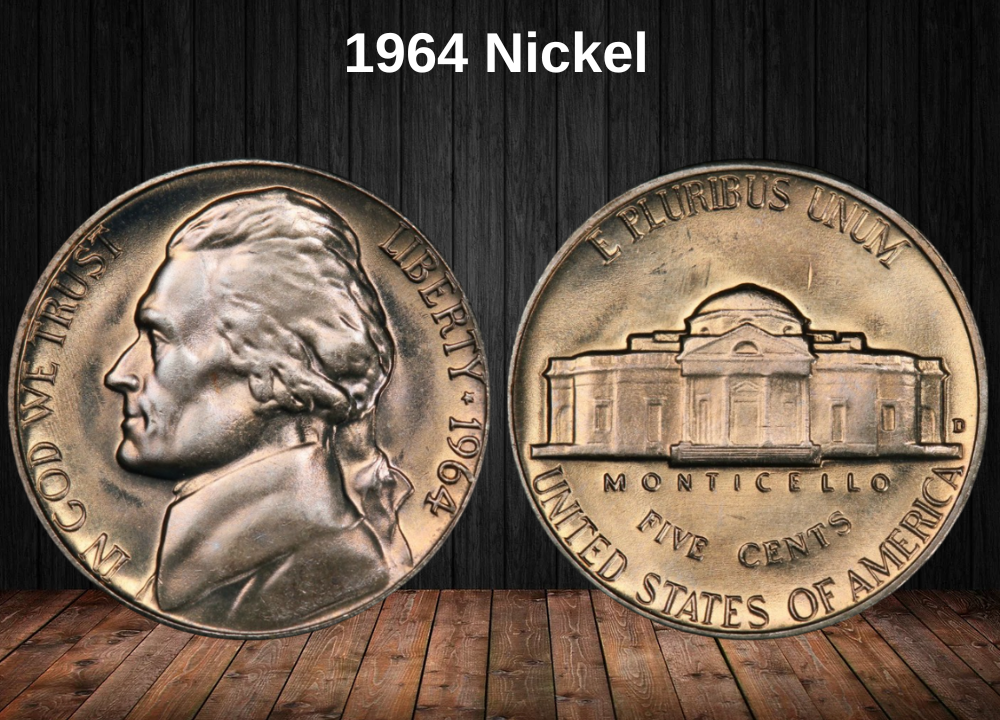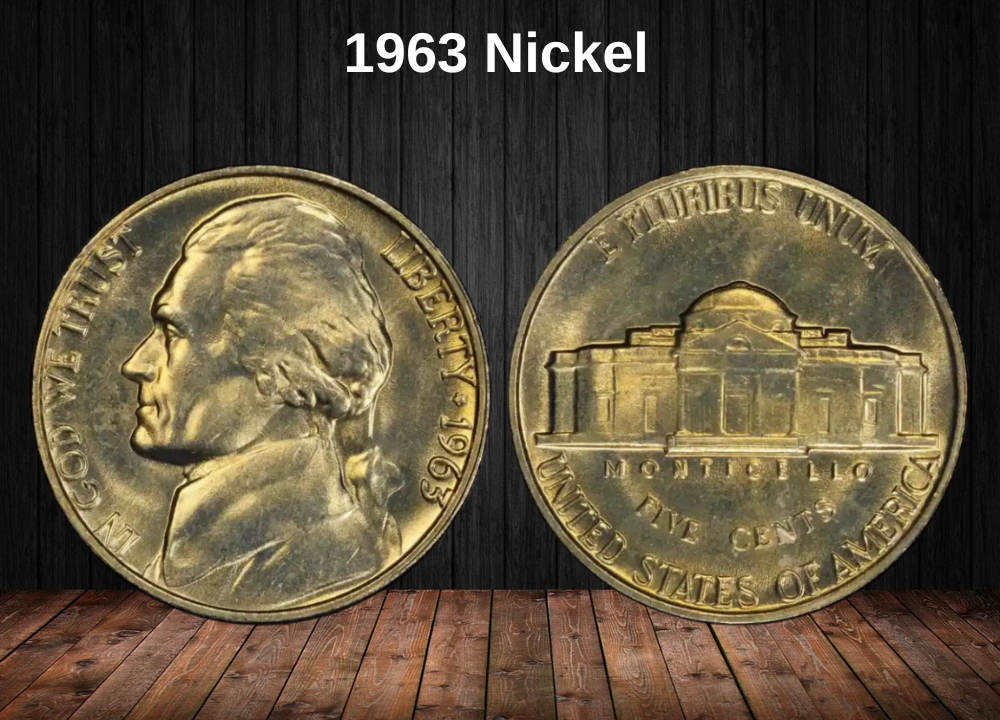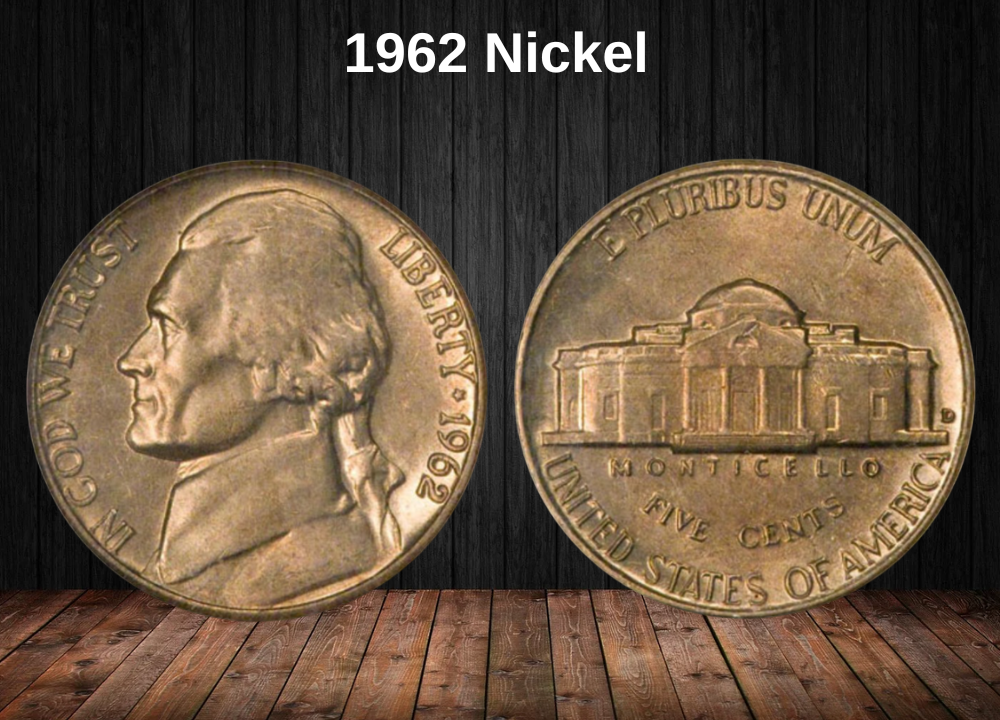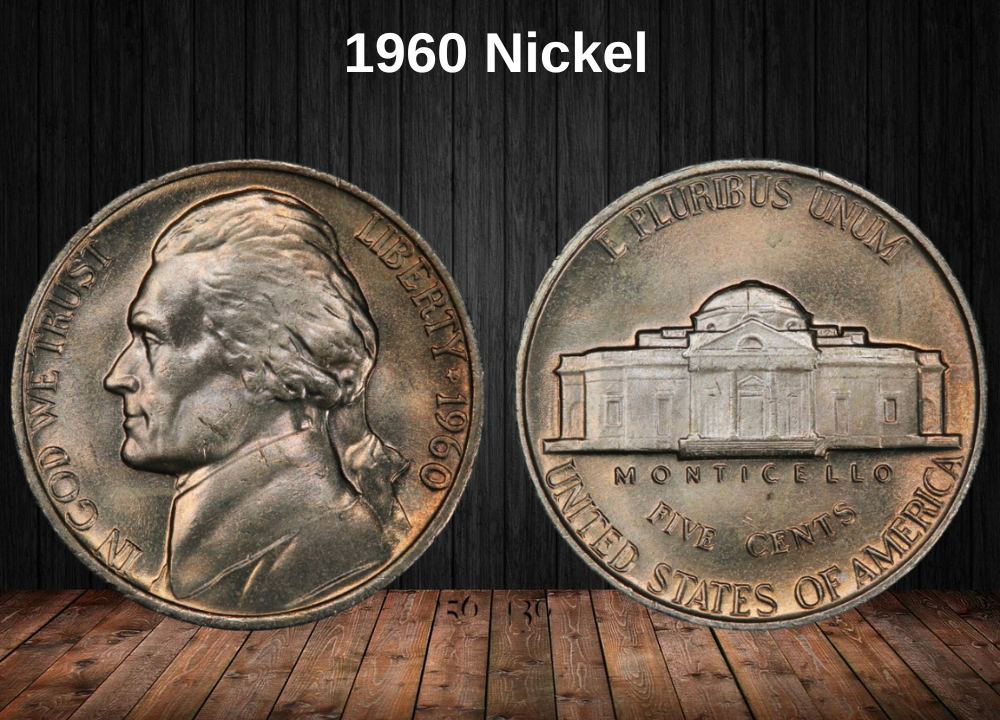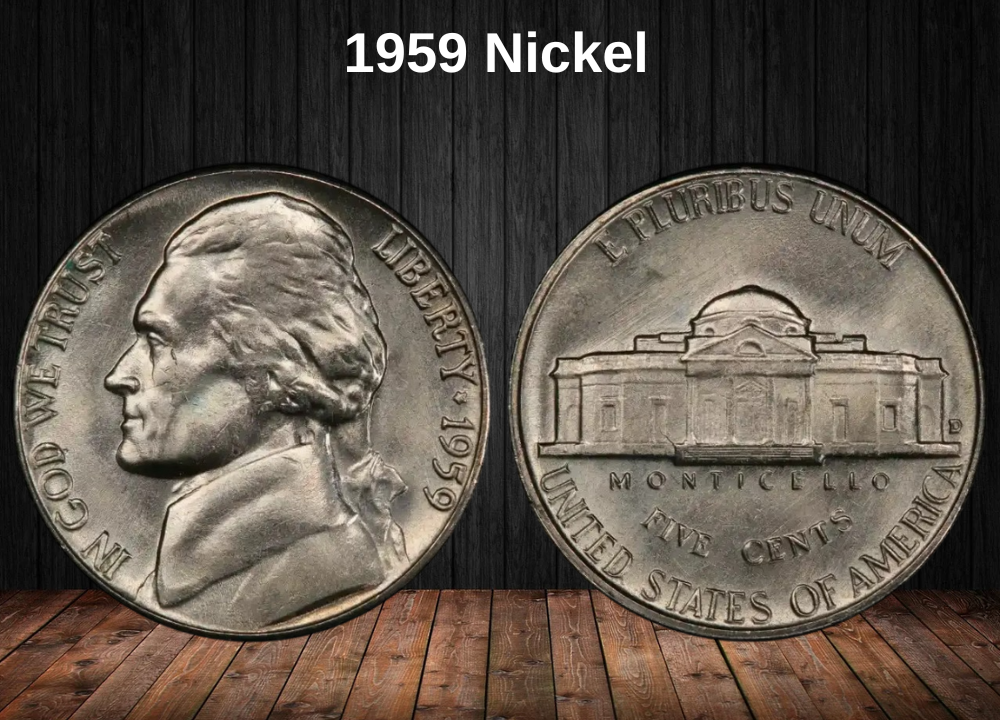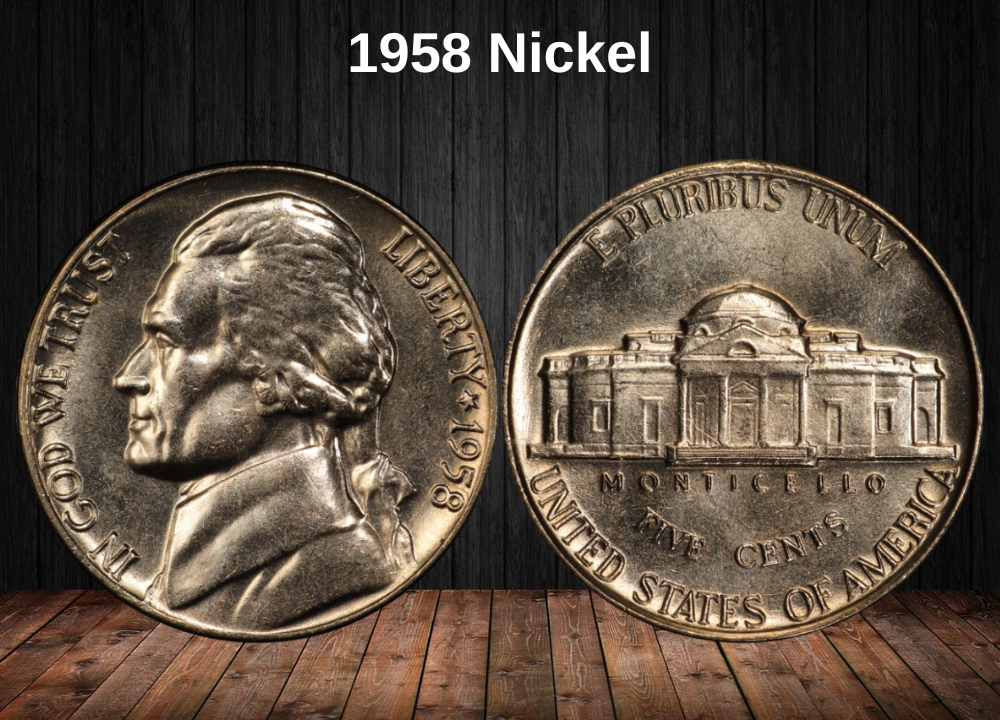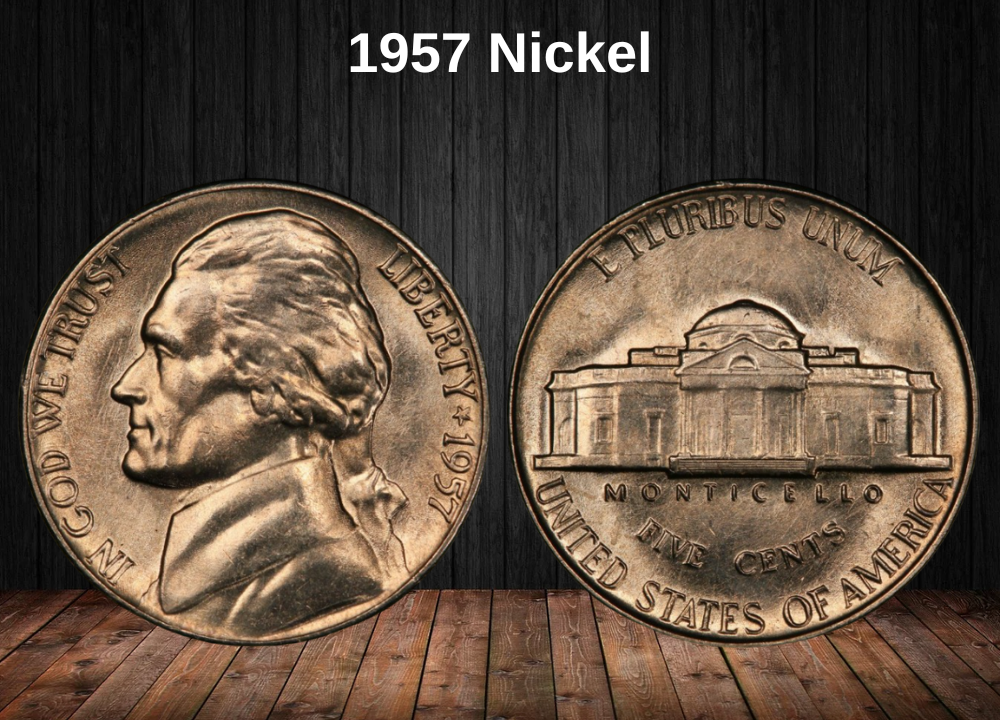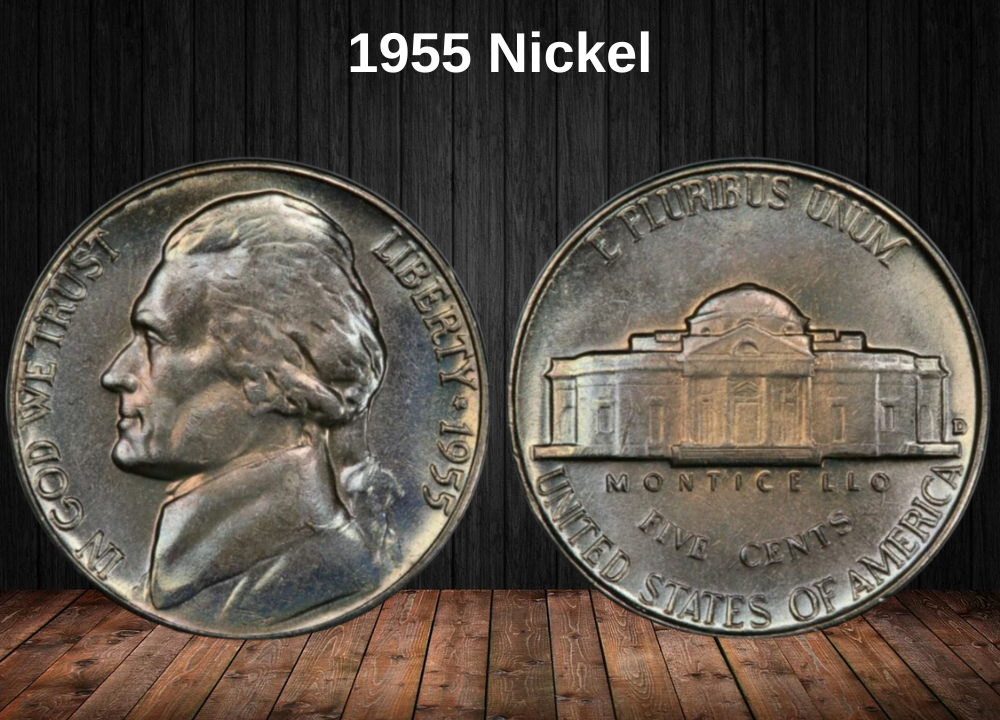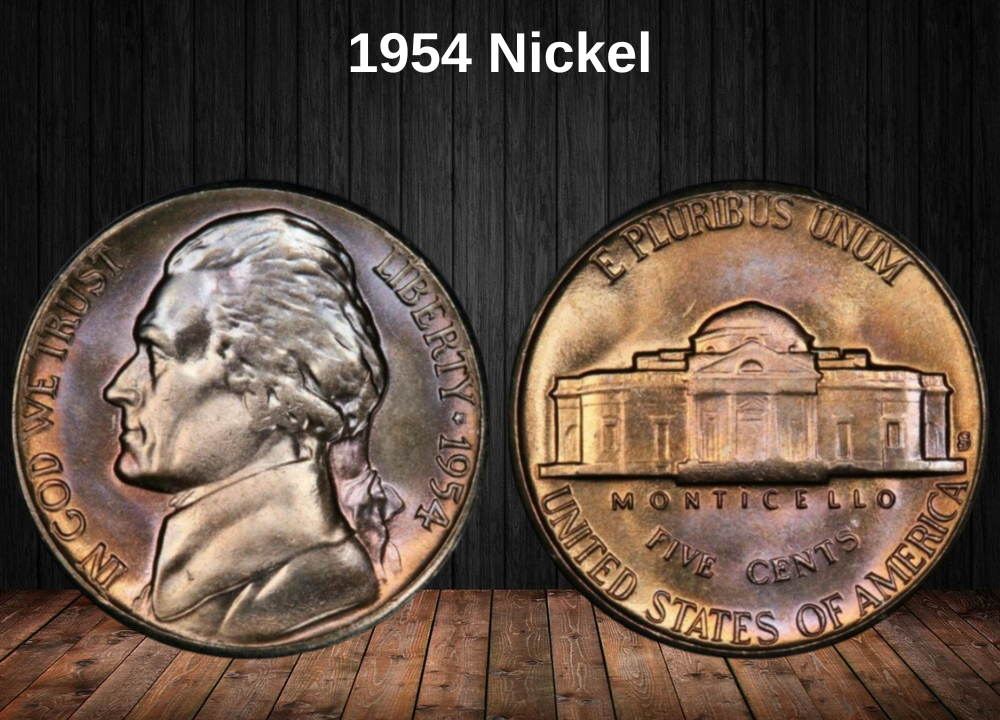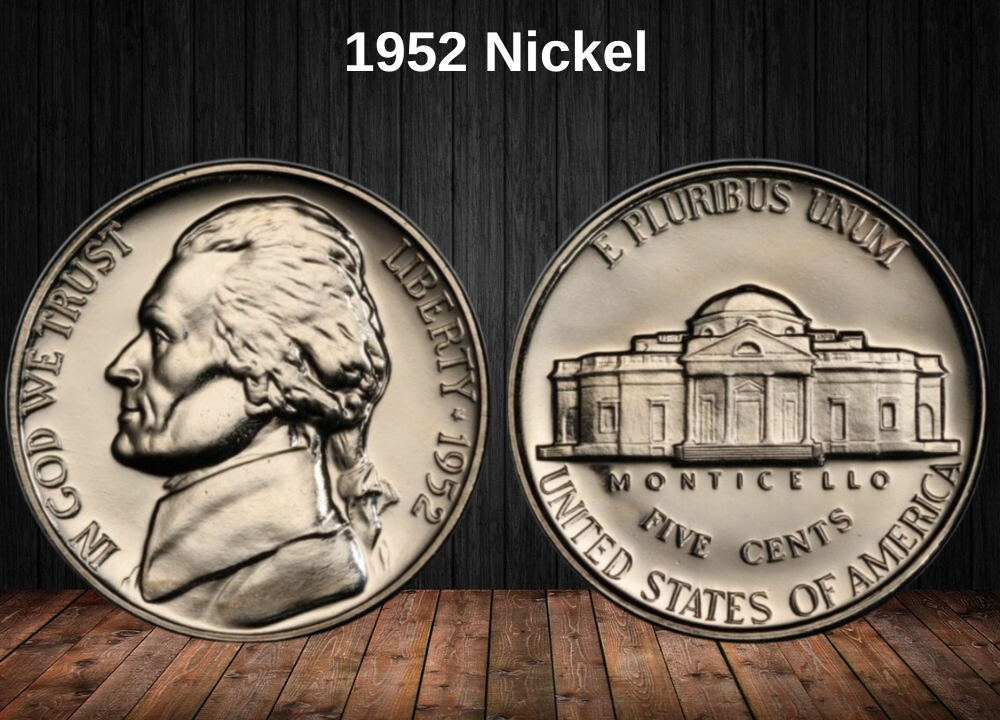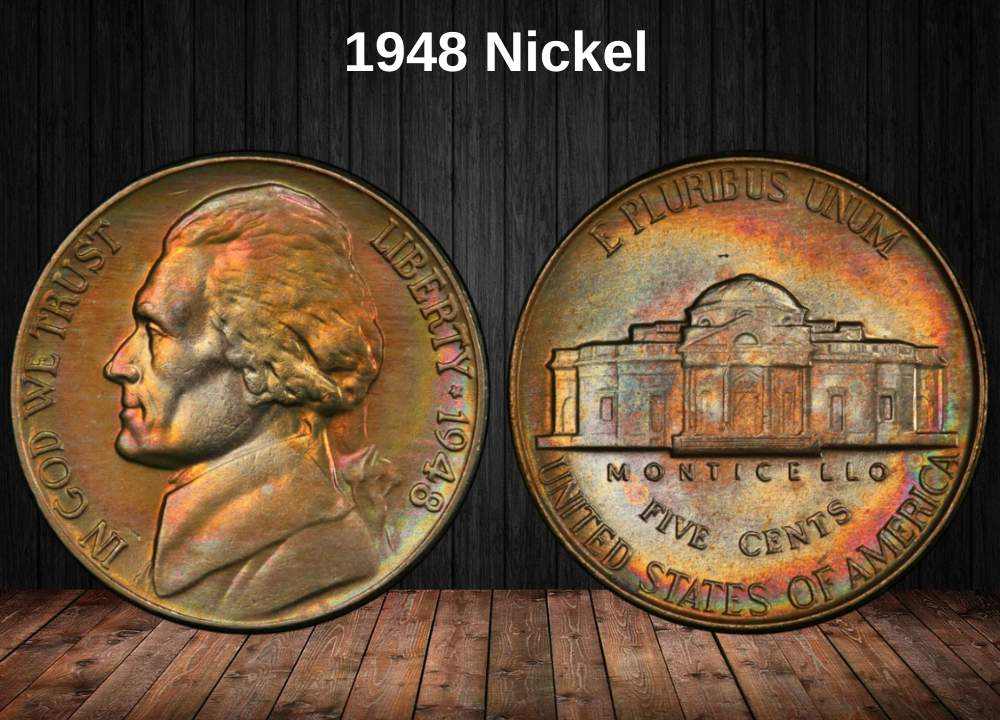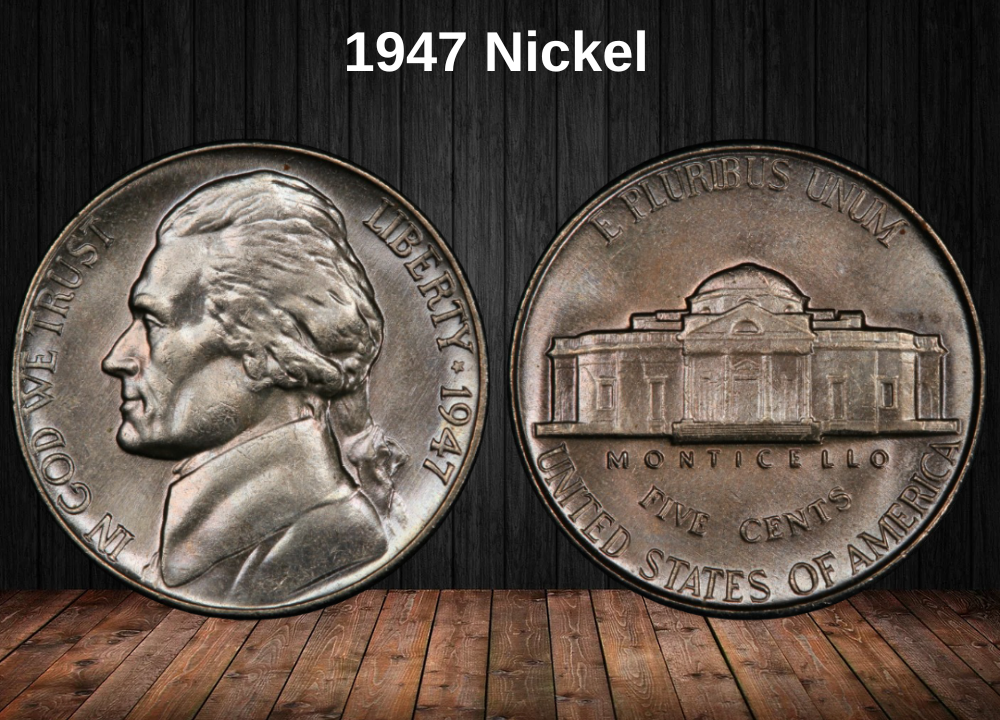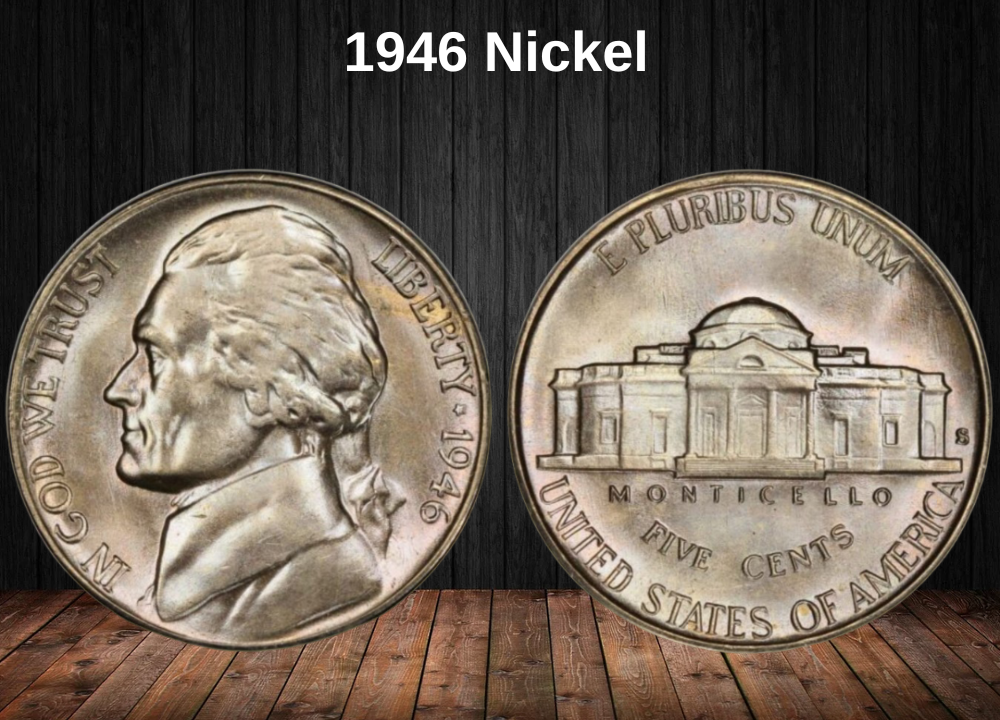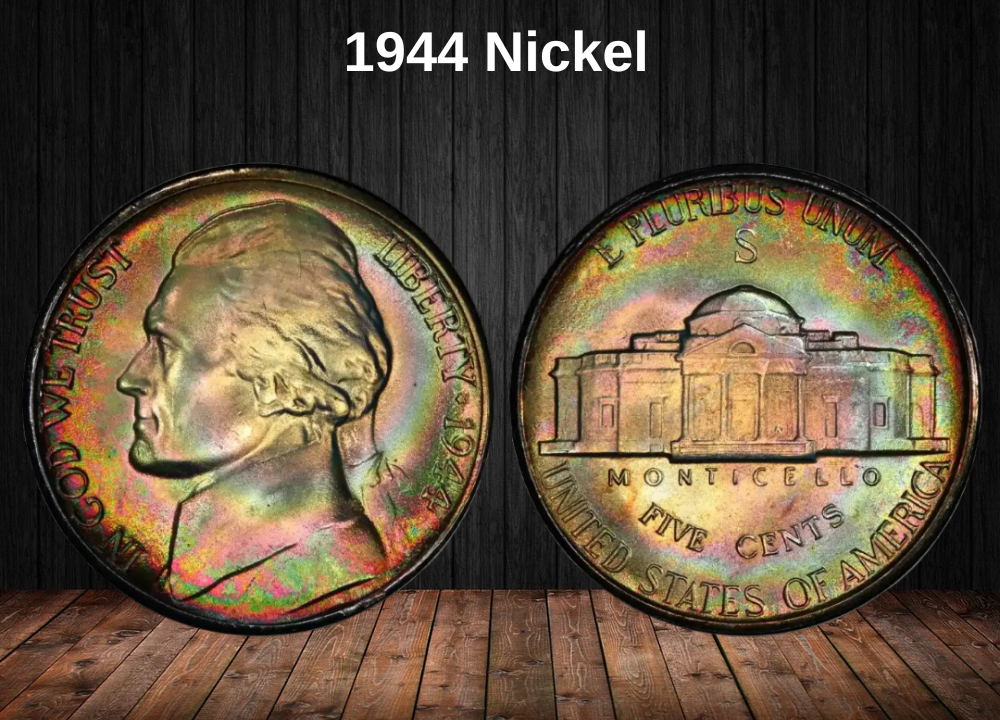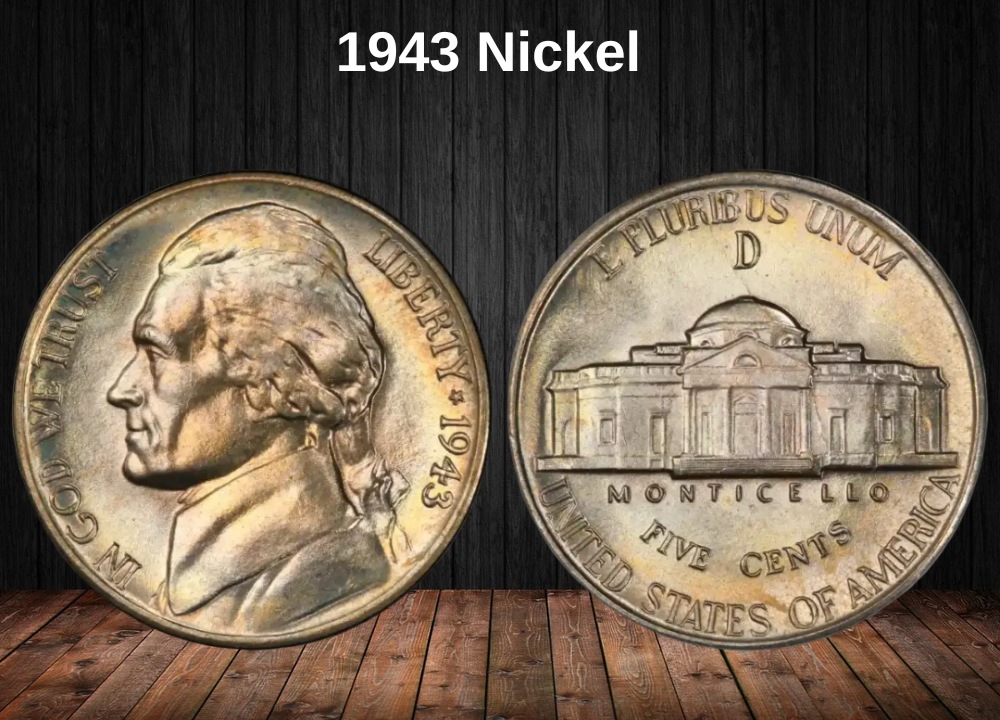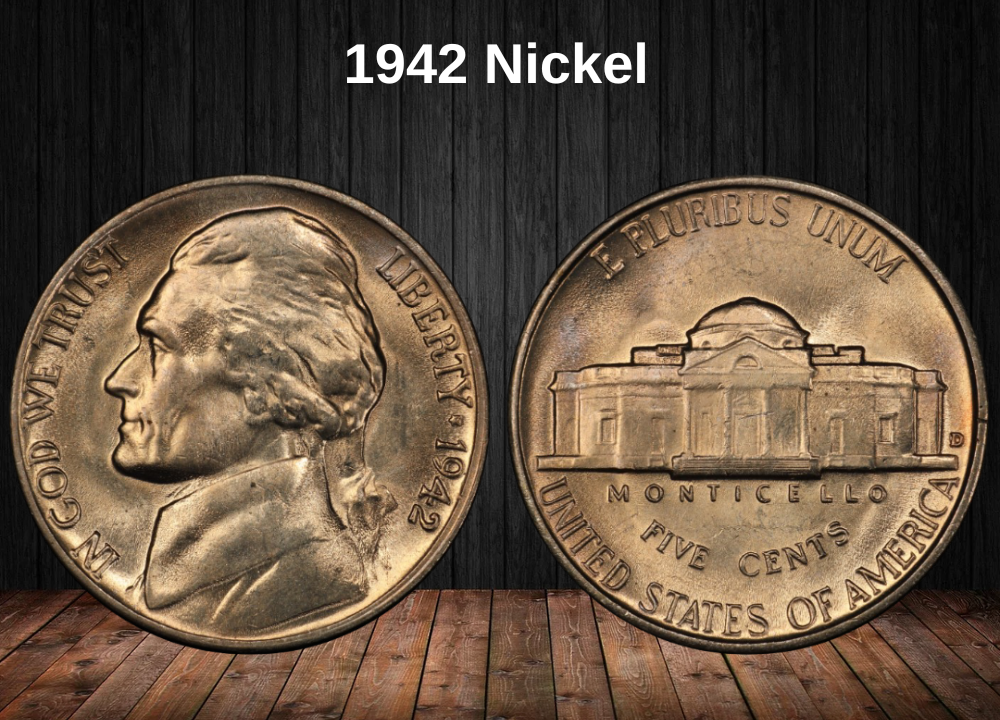The 1977 Jefferson nickel remains a popular collectible, even though it’s not considered rare. Because these coins are relatively modern, most circulated examples are only worth their face value of five cents. However, high-grade, well-preserved pieces — especially those with rare errors or the desirable Full Steps designation — can be worth hundreds or even thousands of dollars.
The Jefferson nickel series is one of the most historically significant U.S. coin series, making the 1977 issue a must-have for many collectors. In fact, some exceptional examples from this year have sold for over $4,000 at auction.
1977 Nickel Value Chart
| Condition | 1977 No Mint Mark Nickel | 1977-D Nickel | 1977-D Nickel D over S |
|---|---|---|---|
| MS 60 | $1 | $1 | — |
| MS 65 | $16 | $12 | — |
| PR 65 | — | — | $5 |
History of the 1977 Jefferson Nickel

The Jefferson nickel debuted in 1938, replacing the Buffalo nickel after its 25-year run. This was the fourth design used for the U.S. five-cent coin since the first Shield nickel was issued in 1866.
It was also only the third U.S. coin to feature a real person — and in this case, a president — on the obverse. The U.S. Mint chose to honor Thomas Jefferson, one of the Founding Fathers, the principal author of the Declaration of Independence, and the nation’s third president.
Jefferson’s political career was extensive: he served as the first U.S. Secretary of State under George Washington, the second Vice President under John Adams, and finally, as President from 1801 to 1809. Beyond politics, Jefferson was a skilled diplomat, architect, philosopher, and lawyer. His Virginia home, Monticello, became the centerpiece of the coin’s reverse design.
The Designer: Felix Schlag
The U.S. Mint organized a public design competition in 1938, inviting artists nationwide to submit their ideas for the new nickel. German-born American sculptor Felix Schlag, who studied at the University of Fine Arts in Munich, won the contest and received a $1,000 prize.
Although Schlag was an accomplished artist, the Jefferson nickel was his only coin design. Initially, his Monticello depiction was shown at an angle with a different lettering style, but Mint officials required changes before production.
Interestingly, the first Jefferson nickels did not carry Schlag’s initials. This omission — whether due to oversight or miscommunication — wasn’t corrected until 1966, when the letters FS (for Felix Schlag) were added beneath Jefferson’s bust on the obverse.
The first Jefferson nickels entered circulation in late 1938, but they didn’t become common in everyday use until 1940, as early hoarding by the public kept them out of circulation.
Features of the 1977 Jefferson Nickel
The 1977 Jefferson nickel continues the iconic design created by Felix Schlag after his victory in the 1938 U.S. Mint design competition. This design was historically significant because it marked only the third U.S. coin to feature a president on the obverse — following the Lincoln cent and Washington quarter.
By choosing a real historical figure instead of an allegorical one, the Mint broke from its long-standing tradition of using symbolic characters on coins. This decision also aligned with George Washington’s own belief that U.S. coinage should avoid the monarchist imagery common in Europe.
Obverse Design

The obverse of the 1977 nickel features a left-facing bust of Thomas Jefferson — philosopher, lawyer, diplomat, and one of the Founding Fathers. Jefferson served as the third President of the United States from March 4, 1801, to March 4, 1809, leading the nation for two full terms.
Around Jefferson’s portrait are the required inscriptions:
- IN GOD WE TRUST — positioned to the left, in front of Jefferson’s face
- LIBERTY followed by the year 1977, separated by a small star — located to the right, behind Jefferson’s head
- On coins from Denver and San Francisco, a mint mark (“D” or “S”) appears near the date
Reverse Design
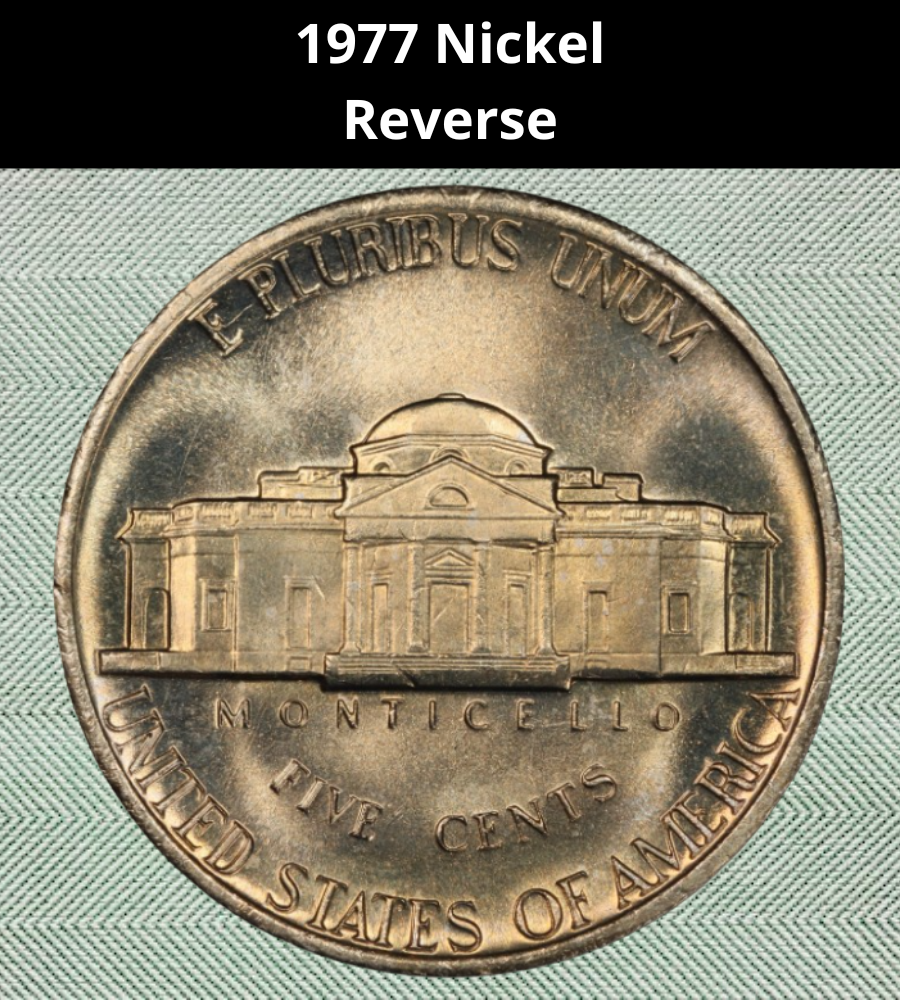
The reverse depicts Monticello, Jefferson’s self-designed home in Virginia, built in the Italian neoclassical style. This mansion, located in the Piedmont region, is now recognized as a National Historic Landmark.
Above the central image is the Latin motto E PLURIBUS UNUM (“Out of many, one”). Below the building is the name MONTICELLO, the denomination FIVE CENTS, and along the lower rim, UNITED STATES OF AMERICA.
Specifications of the 1977 Jefferson Nickel
| Feature | Details |
|---|---|
| Face Value | 5 cents ($0.05) |
| Composition | 75% copper, 25% nickel |
| Weight | 5.00 grams (0.17637 oz) |
| Diameter | 21.21 mm (0.835 inches) |
| Thickness | 1.95 mm (0.07677 inches) |
| Edge | Plain |
| Shape | Round |
The 1977 Jefferson nickel shares the same physical characteristics as other nickels from the series, making it instantly recognizable to collectors. Its classic design and historical significance keep it in demand, especially in high grades or with Full Steps details on Monticello’s stairs.
1977 Jefferson Nickel Grading Guide
The most reliable and widely accepted way to evaluate a 1977 Jefferson nickel is by using the Sheldon Coin Grading Scale. This system rates coins on a scale from 1 to 70, with 1 representing the most worn and damaged specimens, and 70 reserved for flawless coins in perfect, uncirculated condition.
While experienced collectors can estimate a grade by examining luster, wear patterns, and strike quality, only professionally certified coins command top prices at auctions. Certification from a reputable grading service such as PCGS or NGC provides buyers with confidence and can significantly increase a coin’s market value.
Sheldon Grading Scale for the 1977 Jefferson Nickel
| Grade | Description |
|---|---|
| 1 | Basal State – Heavily worn; major details barely visible |
| 2 | Fair – Extremely worn, but type and date identifiable |
| 3 | Very Fair – Slightly more detail than Fair, still heavily worn |
| 4–6 | Good – Major design visible but flat and lacking fine details |
| 7–10 | Very Good – Design clearer with moderate wear |
| 12–15 | Fine – Moderate to heavy wear; some finer details visible |
| 20–30 | Very Fine – Light to moderate wear; key features sharp |
| 40 | Extremely Fine – Only light wear on the highest points |
| 50 | About Uncirculated – Minor traces of wear; most luster intact |
| 60 | Mint State – No wear; minor contact marks from minting |
| 65 | Mint State (Gem) – Strong strike, full luster, minimal marks |
| 70 | Mint State (Perfect) – Flawless coin under 5× magnification |
✅ Tip for Collectors: For the 1977 Jefferson nickel, coins with sharp strikes and fully visible Full Steps on Monticello’s staircase are the most desirable. These high-grade Full Steps examples can be worth significantly more than standard Mint State coins.
1977 Jefferson Nickel Value Guide
In 1977, the U.S. Mint struck a total of 885,940,612 Jefferson nickels across three facilities. The Philadelphia and Denver mints produced circulation coins, while the San Francisco Mint focused exclusively on proofs for collectors.
1977 No Mint Mark Jefferson Nickel Value (Philadelphia)
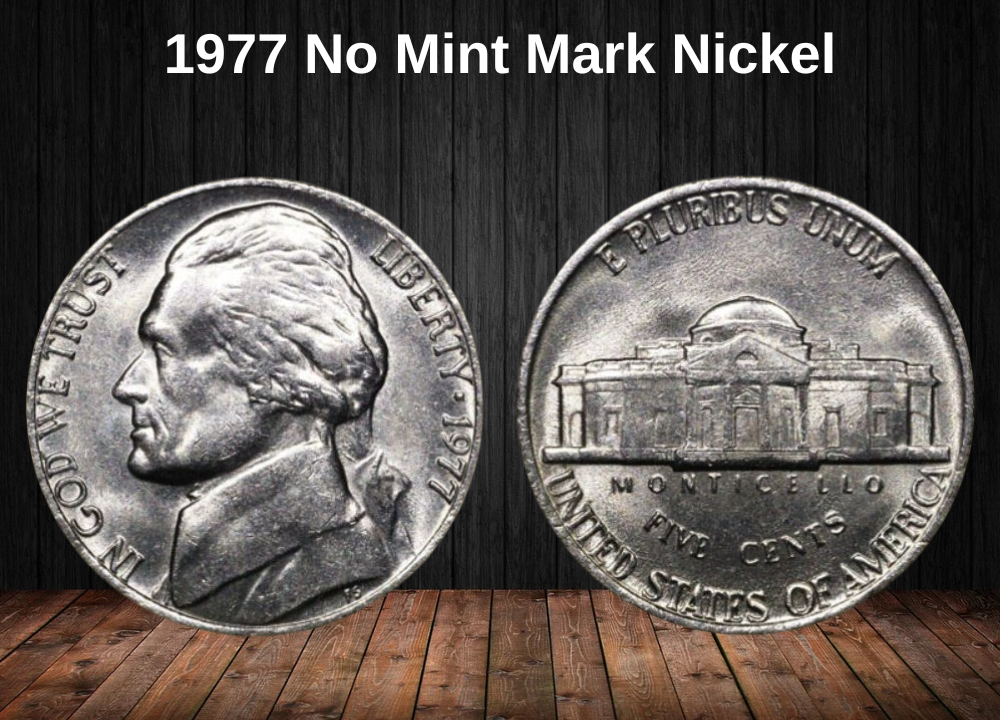
The Philadelphia Mint had the highest output in 1977, producing 585,376,000 nickels without a mint mark. Because of their large mintage and relatively modern date, most examples are common and inexpensive unless found in exceptional condition.
- Circulated value: $0.05 – $0.25
- Mint State (MS 60–MS 65): $1 – $5
- High-grade MS 66: Up to $45
- Auction record: $1,725 for an MS 63 (Heritage Auctions, 2003)
The real standouts are Full Steps (FS) examples. Coins with fully visible Monticello steps are much scarcer and command higher prices:
- MS 64 FS: $30+
- MS 65 FS: $250+
- MS 66 FS: $800+
1977-D Jefferson Nickel Value (Denver)
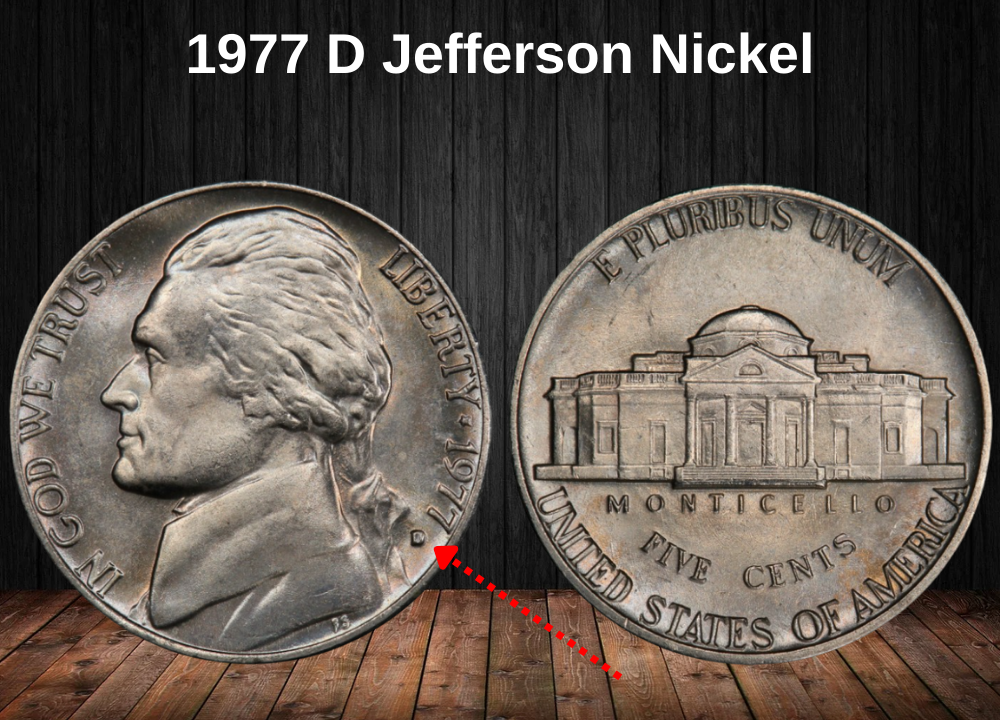
The Denver Mint struck 297,313,460 nickels in 1977, each bearing the “D” mint mark. Circulated examples are worth only their face value, but uncirculated pieces are collectible.
- Circulated value: $0.05 – $0.25
- Mint State (MS 60–MS 65): $0.10 – $35
Full Steps examples are significantly more valuable:
- MS 64 FS: $12+
- MS 65 FS: $75+
- MS 66 FS: $200+
- MS 67 FS: $4,250 (Auction record: Heritage Auctions, 2021)
1977-S Proof Jefferson Nickel Value (San Francisco)
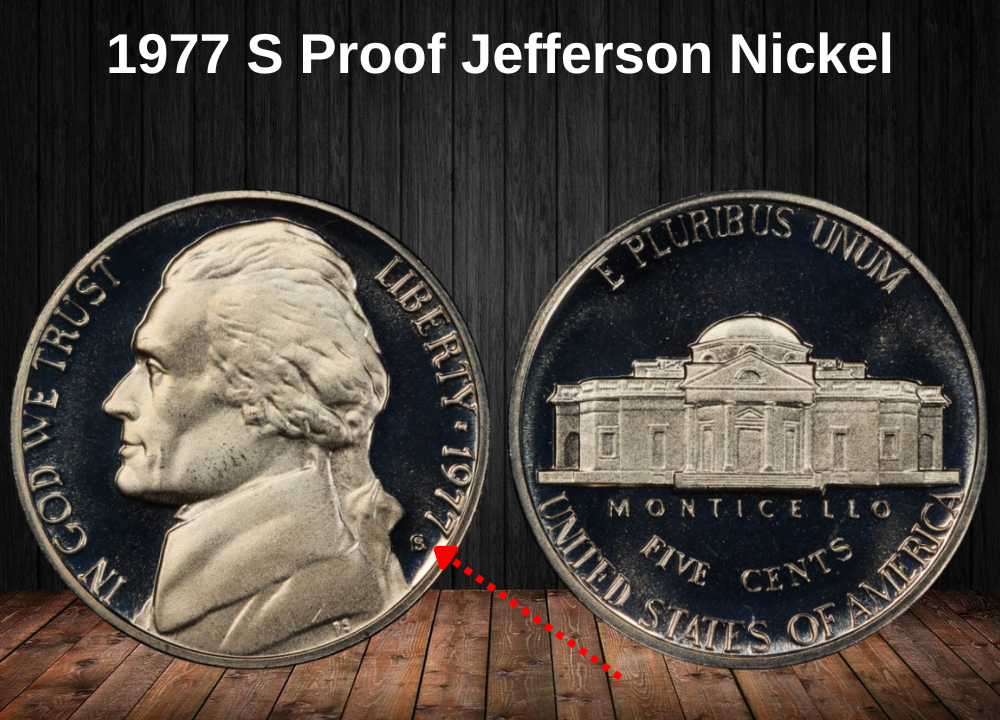
The San Francisco Mint produced 3,251,152 proof nickels in 1977, all intended for collectors. While beautifully struck with frosted devices and mirror-like fields, most remain affordable due to their availability.
- PR 66 DCAM: $5
- PR 67 DCAM: $6
- PR 68 DCAM: $8
- PR 69 DCAM: $15
- PR 70 DCAM: $160 (common for top grade)
Auction record: $1,840 for a PR 70 DCAM (Heritage Auctions, 2007)
Rare 1977 Jefferson Nickel Errors List
While most 1977 Jefferson nickels are common and inexpensive, a small number were struck with minting errors that make them highly collectible. These error coins add variety to modern issues and can command significant premiums, especially in higher grades.
Cud Error
A cud error occurs when part of the coin die breaks off, leaving a raised, blob-like area along the rim. This defect often erases parts of the design or inscriptions.
- Typical value: $20 – $35 (depending on cud size and location)
Cud with Filled D Mint Mark (1977-D)
Some 1977-D nickels feature two errors in one—a cud and a filled “D” mint mark. The cud comes from a cracked or broken die, while the filled mint mark is caused by grease or debris clogging the die cavity.
- Market value: $4 – $5 (less sought-after by serious collectors)
Off-Center Strike
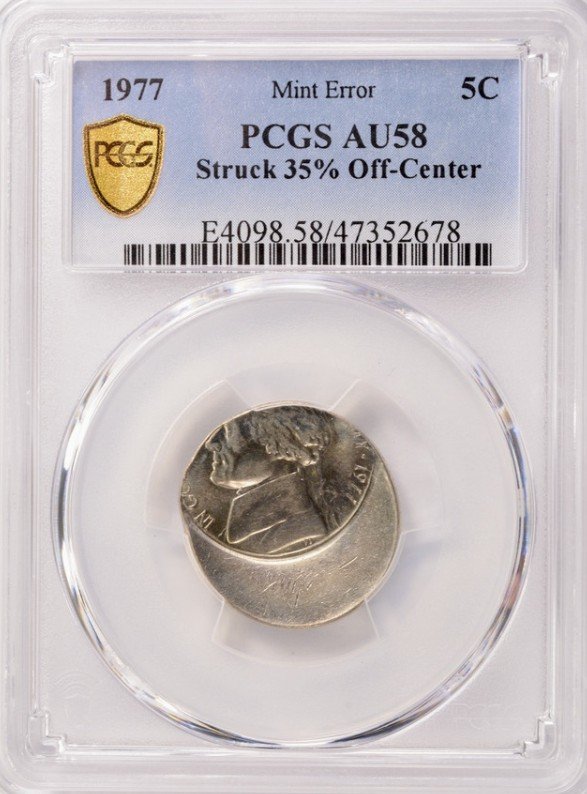
An off-center strike happens when the planchet is not properly aligned in the press.
- 3%–10% off-center: $5 – $10
- Around 50% off-center: ~$100 (most desirable)
Some examples combine minor off-center strikes with doubled die obverse (DDO) or doubled die reverse (DDR) errors, but this usually adds little value—most still sell for under $5.
Struck on the Wrong Planchet
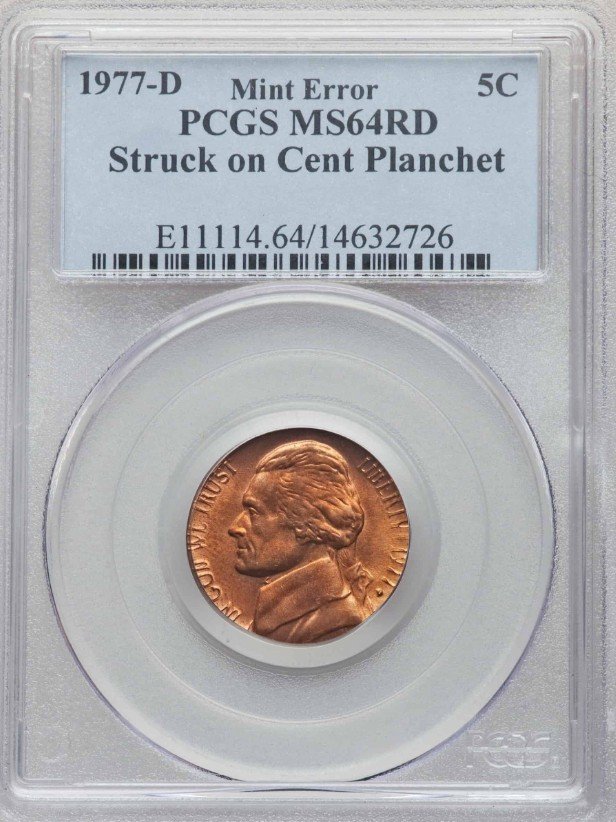
Occasionally, 1977 nickels were mistakenly struck on planchets meant for other coins, such as one-cent (penny) or 10-cent (dime) blanks.
- Appearance: Smaller, thinner, and sometimes with a visible outline of the incorrect reverse; coppery tone if on a cent planchet.
- Value range: $150+ for typical examples; rare cases have sold for several thousand dollars at auction.
Where to sell your nickel?
Now that you’re aware of your nickel’s value, you may be curious about the best places to sell it. Don’t worry: here’s a rundown of some top online marketplaces where you can conveniently sell your nickels, along with their benefits and drawbacks.
Explore the best platforms for selling nickels online (advantages and disadvantages).
FAQ About the 1977 Jefferson Nickel
What makes a 1977 Jefferson nickel rare?
While most 1977 nickels are common due to their high mintage—over 885 million pieces—certain examples stand out. Coins with Full Steps (FS) in the highest Mint State grades (MS 66–MS 67) are significantly harder to find and can bring strong prices at auction. Additionally, dramatic minting errors, like off-center strikes or wrong planchet strikes, are much rarer and sought after by collectors.
Which 1977 Jefferson nickel is worth the most money?
Here are some of the highest auction prices for 1977 nickels:
- 1977 Jefferson nickel (No Mint Mark) Full Steps, MS 67: $4,495 (eBay, 2019)
- 1977-D Jefferson nickel Full Steps, MS 67: $4,320 (Stack’s Bowers, 2021)
- 1977-S Jefferson nickel Proof, PR 70 Full Steps: $1,840 (Heritage Auctions, 2007)
- 1977 Jefferson nickel, MS 63: $1,725 (Bowers & Merena, 2003)
- 1977-D Jefferson nickel, MS 67: $247 (eBay, 2018)
How much is a 1977 No Mint Mark Jefferson nickel worth?
Coins struck in Philadelphia in 1977 have no mint mark. Most circulated examples are worth only their face value of $0.05.
- Typical uncirculated grades (MS 60–MS 64): $1 – $5
- High grades (MS 65–MS 66): $6 – $45
- Full Steps examples (MS 64–MS 66): $20 – $440 depending on condition
Are 1977-D Jefferson nickels valuable?
Most 1977-D nickels are common, but high-grade examples can be valuable:
- Typical uncirculated (MS 60–MS 64): $0.10 – $7
- MS 66 Full Steps: up to $200
- MS 67 Full Steps: over $4,000 at auction
What are the most valuable Jefferson nickels ever sold?
The Jefferson nickel series has produced some standout sales:
- 1954-S Full Steps MS 67: $35,250 (2020) – most expensive in the series
- 1969-D Special Strike SP 68 FS: $32,900 (2016) – highest Philadelphia strike price
- 1949-D/S Overmintmark MS 67: $32,900 (2014) – rare error
- 1942-D/D Horizontal D MS 64: $32,200 (2006) – dramatic doubled mint mark error
Where is the mint mark on a 1977 Jefferson nickel?
The mint mark, if present, is located on the obverse, to the right of Thomas Jefferson’s ponytail and just below the year 1977.
- No mint mark: Philadelphia
- “D”: Denver
- “S”: San Francisco (proof coins only)
What is the Full Steps designation and why does it matter?
“Full Steps” refers to the visibility of at least five distinct steps on the image of Monticello on the reverse. FS coins indicate a sharp strike and minimal wear, making them significantly more valuable.
Do 1977 Jefferson nickels have silver in them?
No. By 1977, Jefferson nickels were made of 75% copper and 25% nickel. Only wartime nickels (1942–1945) contained silver.

